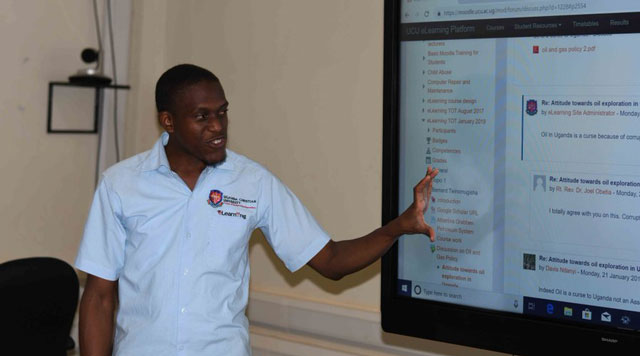
Kampala, Uganda | THE INDEPENDENT | More than 73% of students in higher institutions of learning have found the new learning methods employed during the lockdown harder than conventional studying methods.
Several institutions switched from the four-walled classrooms and adopted remote collaboration tools and learning management systems after the closure of educational institutions in March, as the government attempted to limit gatherings and reduce the risk of transmission of the novel coronavirus.
During the time of the closures, Africa Policy Centre, a non-government organisation based at the Uganda Christian University in Mukono carried out a study to establish the effect of the COVID-19 driven school closures on higher institutions of learning. They reached out to 426 respondents from different institutions across the country.
They established that the majority of the learners find the remote learning tools problematic, and prefer the conventional modes of learning, while many others found the home environment very unsupportive towards their studies. Cadreen Barungi Kabahizi, the project lead researcher says that for several learners, adjusting to the new model is a real struggle.
Renowned educationist Okello, this is no surprise given the fact that homes were already undergoing several other pressures including financial constraints and education of students wasn’t a priority.
“Even though families might have wanted to support these students, the situations wouldn’t warrant this. During this crisis, survival was the key aspect. This clearly explains why some people found the home environment unsupported,” says Rev Fr Okello.
The study also points out that half of the students at this level failed to continue with learning during the lockdown, many as a result of costs involved. The costs were arising from the need to purchase equipment and sustain online presence during the lockdown. According to the study, many of the learners abandoned the online engagements and opted for self-study using textbooks and other online resources. Only 16.5 per cent of the respondents were able to constantly interact with lecturers via on-line platforms.
Annet Najjuuko, a student-teacher at Kabulasoke Primary Teachers’ College attest to this. she notes that although she wanted to learn using the online platforms suggested by the institution, her parents could not provide data to facilitate the connection.
But, by and large, the study points out that a big portion of learners engaged in some form of learning which brought the actual number of academically idle students to a much smaller percentage of eight per cent. Kabahizi notes that the development was a good testament to the self-initiative of students and shows that when students want to learn, and their home environments are supportive of their academic endeavours, they can achieve so much academically.
With all the difficulties experienced during the lockdown, the majority (74.2 per cent) of the respondents preferred that when schools resume, the mode of instruction should revert to in-class lectures. However, the study recommends the introduction of blended learning where e-learning platforms can be used but also put up some physical engagement between lecturers and learners.
*****
URN
 The Independent Uganda: You get the Truth we Pay the Price
The Independent Uganda: You get the Truth we Pay the Price


